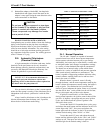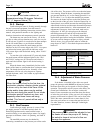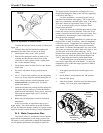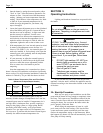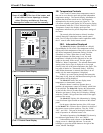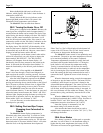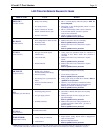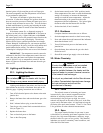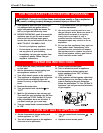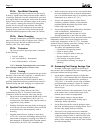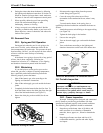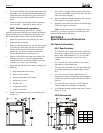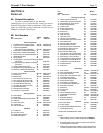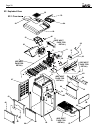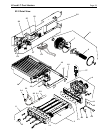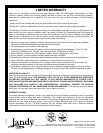
Page 24
4. Before entering the spa or hot tub, users should check
the water temperature with an accurate thermometer;
spa or hot tub thermostats may err in regulating water
temperatures by as much as 4F° (2C°).
5. Persons with medical history of heart disease,
circulatory problems, diabetes or blood pressure
problems should obtain their physician's advice
before using a spa or hot tub.
6. Persons taking medications which induce drowsiness,
such as tranquilizers, antihistamines, or
anticoagulants should not use spas or hot tubs.
Prolonged immersion in hot water can induce
hyperthermia. Hyperthermia occurs when the internal body
temperature reaches a level several degrees above the
normal body temperature of 98.6°F (37°C). Symptoms
include dizziness, fainting, drowsiness, lethargy, and an
increase in the internal body temperature.
The effects of hyperthermia include:
Unawareness of impending hazard
Failure to perceive heat
Failure to recognize need to leave spa
Physical inability to leave spa
Fetal damage in pregnant women
Unconsciousness resulting in a danger of
drowning
3F. Swimming Pool Energy Savings Tips
Waterpik Technologies suggests the following to
help conserve fuel and minimize the cost of operating your
pool heater without sacrificing comfort.
1. Set the heater temperature control no higher than
78°F (26°C). The American Red Cross maintains that
the healthiest water temperature for swimming is
78°F (26°C) is. Be certain you are using an accurate
pool thermometer, because a variance of 4 degrees,
from 78 to 82°F (26 to 28°C) will use as much as
40% more gas.
2. Carefully monitor the water temperature of your pool
in the summer time, because heater usage can be
reduced due to warmer air temperatures.
3. Find the proper setting on the pool heater
temperature control and use the locking ring to
discourage further adjustments.
4. Set the filter time clock to start the pump no earlier
than 6:00 AM during the pool heating season. This is
the time when nightly heat loss stabilizes.
5. If the pool is only going to be used on weekends,
reduce the heater temperature control setting by 8 or
10 degrees during the week. It should be reset to the
78°F (26°C) level before expected usage, keeping in
mind to allow enough lead time for the water to reach
the desired temperature.
3D-2a. Spa Water Chemistry
Maintaining safe water conditions in a spa can only
be done by regular water changes and the proper addition
of sanitizing chemicals. Kits are available from your local
pool supply dealer for making the various tests for mineral
content. One of these kits will detect copper in the system.
This is usually a warning that corrosion is taking place,
possibly due to a low pH value combined with other
chemistry problems. The condition can be corrected by
changing the spa water and closely monitoring the pH
factor and chemical properties of the water (see Table 6).
3D-2b. Water Changing
Waterpik Technologies recommends changing of spa
water every 60 days if usage is light and every 30 days
during heavy usage. Be sure to stabilize the water
chemistry after every water change.
3D-2c. Corrosion
The corrosive action of pool/spa water is increased
by the following:
1. Low pH - acidity
2. Low Total Alkalinity - bicarbonates
3. Low Calcium hardness - soft water
NOTE: Waterpik Technologies does not warrant
heat exchangers damaged by corrosive water.
3D-2d. Testing
Waterpik Technologies recommends that spa owners
purchase a test kit and use it regularly. A minimum kit is
one which will measure chlorine and pH levels.
The pool/spa owner will find it helpful to have a
qualified professional technician perform more extensive
chemical testing and water changing on a regular basis.
3E. Spa/Hot Tub Safety Rules
The following "Safety Rules for Hot Tubs,"
recommended by the U.S. Consumer Product Safety
Commission should be observed when using the spa:
1. Spa or hot tub water temperature should never exceed
104°F (40°C). A temperature of 100°F (38°C) is
considered safe for a healthy adult. Special caution is
suggested for young children.
2. Drinking of alcoholic beverages before or during spa
or hot tub use can cause drowsiness which could lead
to unconsciousness and subsequently result in
drowning.
3. Pregnant women beware! Soaking in water above
102°F (39°C) can cause fetal damage during the first
three months of pregnancy (resulting in the birth of a
brain-damaged or deformed child). Pregnant women
should stick to the 100°F (38°C) maximum rule.



